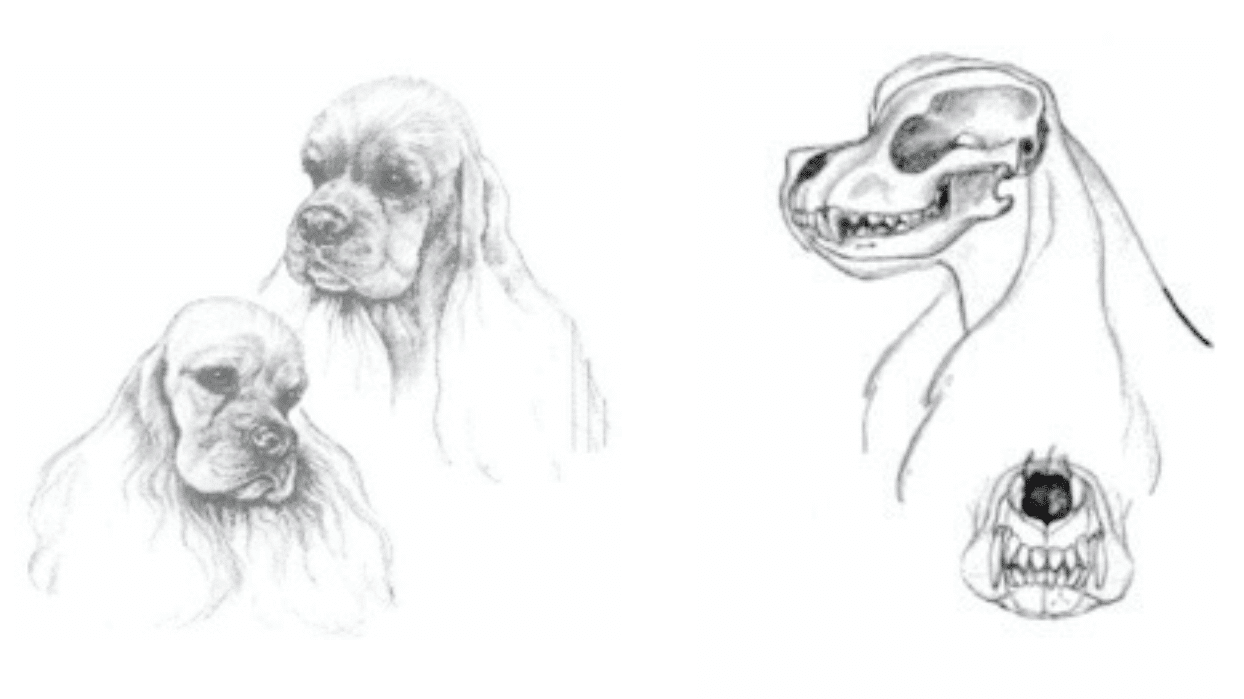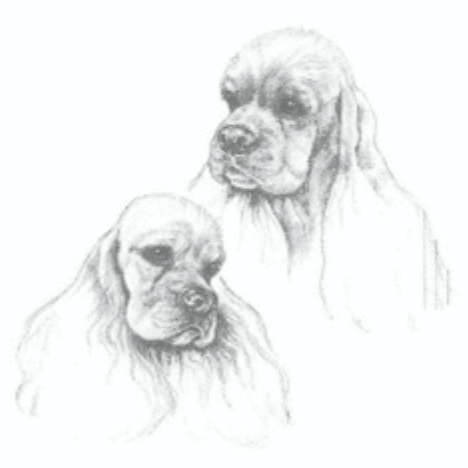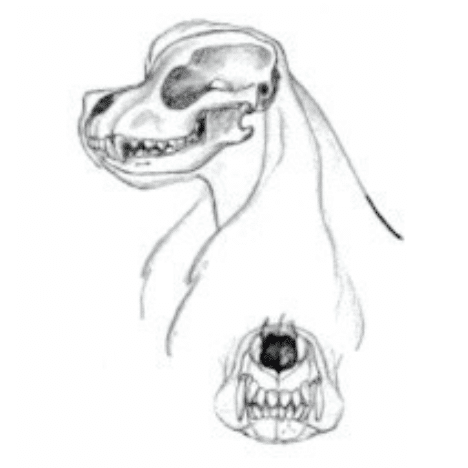


Home » Judging the Cocker Spaniel

This article was originally published in Showsight Magazine, September 2014 issue.
“The Cocker Spaniel is the smallest member of the Sporting Group. He has a sturdy, compact body and a cleanly chiseled and refined head, with the overall dog in complete balance and of ideal size. He stands well up at the shoulder on straight forelegs with a topline sloping slightly toward strong, moderately bent, muscular quarters. He is a dog capable of considerable speed, combined with great endurance. Above all, he must be free and merry, sound, well balanced throughout and in action show a keen inclination to work. A dog well balanced in all parts is more desirable than a dog with strongly contrasting good points and faults.”
Anyone who has ever read the opening paragraph of the AKC Standard for the Cocker Spaniel should recognize this statement—but what does it mean when it comes time to judge this breed? And what are the challenges judges are encountering when trying to find “the good ones”?
Indeed the Cocker Spaniel is the smallest member of the Sporting Group, but judges should be aware that does not mean he is slight of build or without the muscling that is necessary for him to do the job he was originally bred for. Many of the Cockers in the ring in recent years (both dogs and bitches) have been small in stature, bone and muscling. And because of that, they do not have the “sturdy, compact body” called for in the standard.
That stature and muscling is necessary for the function this breed is meant to perform—pushing its way through dense underbrush and bramble and flushing birds from their hiding places. This hunting style is the reason for the height disqualification in the breed. Dogs that are more than 15½ inches at the withers and bitches that are taller than 14½ are considered to be too large to effectively work in the kind of conditions in which they are asked to hunt.
While there is not a disqualification for a Cocker Spaniel that is too small, the standard calls for a dog which is undersized to be penalized—something judges are asked to keep in mind when considering exhibits in their rings.
Because judges cannot measure to determine whether dogs are below the preferred height (smaller than 14½ inches for dogs and 13½ inches for bitches), this penalty is difficult to assess. But a Cocker Spaniel that is too small in size as well as bone and muscling is unable to correctly do the job for which it was bred. As is true in considering other factors in judging, the dog or bitch which seems larger than the others in a class may actually be of correct height. This does not mean a coarse or overly heavy-boned dog should be rewarded. The Cocker Spaniel should retain its refined beauty no matter its size.
Judges are urged to measure larger dogs and bitches to disqualify those that are over-sized. They are also urged to take the opportunity to train their eyes and hands to understand correct height and bone by going over a number of specimens through a variety of learning experiences.
Now let’s consider the Cocker Spaniel’s headpiece. It is both endearing and breed-defining (see Figure 1). The correct proportions of the head are critical to maintaining type. The “skull is rounded but not exaggerated with no tendency toward flatness”. And the area under the eye is well-chiseled.

“The muzzle is broad and deep, with square even jaws. To be in correct balance, the distance from the stop to the tip of the nose is one half the distance from the stop up over the crown to the base of the skull.”
In order for the Cocker Spaniel to hold and carry a bird, it must have correct length of muzzle. However, too often in modern show rings we are seeing muzzles that are too short and lips which are not full enough to effectively carry a bird as large as a pheasant. Remember the standard calls for the upper lip to be full and of sufficient depth to cover the lower jaw. One of the issues facing the breed is that head size is becoming smaller along with the rest of the dog. That leads to a shortening of the muzzle that does not allow for teeth that are “strong and sound, not too small and meet in a scissor bite.” See Figure 2.

And now a few words about tails. The AKC standard describes the Cocker Spaniel’s body as follows: “Back is strong and sloping evenly and slightly downward from the shoulders to the set-on of the docked tail. The docked tail is set on and carried on a line with the topline of the back, or slightly higher; never straight up like a Terrier and never so low as to indicate timidity. When the dog is in motion, the tail action is merry.” Please note the standard does not say an undocked tail is either a disqualification or should be considered a serious fault.
Judges are asked to consider the entire dog, keeping in mind its function as a hunting companion. The American Spaniel Club will support a judge’s decision to excuse, withhold, or consider a dog with an undocked tail, but it also encourages judges to consider the function of the dog when making decisions. Keep in mind this question from a long-time Breeder/Judge who judges the entire Sporting group, “Are you judging the dog or the tail?”
The American Spaniel Club’s Board of Directors has issued a statement in support of docked tails for Cocker Spaniels and all Flushing Spaniels because of its importance as a characteristic for a hunting dog. In a statement released by the ASC board in 2009, the Board points out that “since 1881 Cocker Spaniels with docked tails have been a part of the fabric of the United States.” And that because of the Cocker Spaniel’s “incessant, merry action of the tail while working in thick, dense cover which is sometimes deeper than the dog is tall absolutely necessitates docking to prevent injury to the animal.” And then there is this note for judges—please remember that “above all, he shall be merry.”
The temperament of the Cocker Spaniel is one of its most important breed characteristics. The standard tells you the Cocker is “equable in temperament with no suggestion of timidity.” Well-bred Cocker Spaniels love people and enjoy meeting new “friends” (even judges). When approaching a Cocker Spaniel that is stacked on a table for exam, it is not unusual for them to wag their tails, move a foot, or otherwise show their delight in meeting you!
I once had a judge look at one of my dogs on the table and proclaim with some distaste, “She’s wiggling.” My response? “Indeed she is—she’s a Cocker Spaniel.”
While we all want dogs to be under control and trained, please remember this is an outgoing, happy, high-energy breed. The only Cocker temperament that should be penalized is timidity. If a Cocker Spaniel is fearful or unwilling to be approached, it should not be rewarded.
Finally—please enjoy your time in the ring with Cocker Spaniels. It almost goes without saying—they are happy to be there with you!